|
While I was a little apprehensive about reviewing Walerian Borowczyk's Goto Isle of Love (I've outlined the reasons in that review), I was genuinely looking forward to tackling Blanche. My reasons are personal and go back a long way. Blanche was the first Borowczyk film that I saw, but in circumstances that were about as far from ideal as you could imagine. It was screened late at night on regional commercial television in a slot reserved for interesting non-mainstream and usually foreign language films, late enough for me to have to buy my brain a four course dinner and chocolates in order to persuade it to keep me awake until the end. The television itself was not much help, a black-and-white portable with a 14" screen and a loop of wire for an aerial that you had to wiggle about for half-an-hour to get a picture that was close to being stable and clear. Oh yes, and being in a bedsit, I couldn't have the sound up too loud. Great, huh?
But the film made an impression. I remembered this later after all other memories of the screening had been nudged out of my head by a plethora of subsequent experiences. The one thing I always recalled clearly was the manner in which the film was shot, with almost every scene photographed head-on in the manner of period paintings or murals. At a stage in my film course where we were learning how to direct and photograph drama, here was a film that kicked against the content of almost all of our lessons. There were next to no angular shots, few camera movements, and no over-the-shoulder reverse coverage of conversations. But it worked. It really worked. Even years later, when I'd forgotten the details and even the story, I was convinced of that.
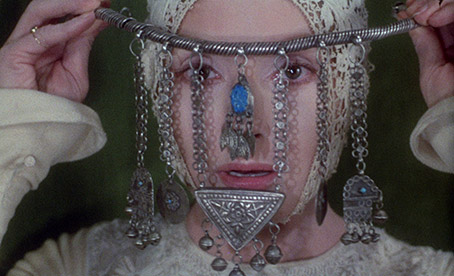
Having decided to watch the films in Arrow's Borowczyk box set in chronological order, I knew that I was in some ways building up to Blanche, a sensation that was enhanced by the similar approach to staging and photographing scenes in the film's immediate predecessor Goto Isle of Love. Thus when I sat down to re-watch Blanche for the first time in many years, I did so with a degree of confidence that it would live up to my faded memories. What I wasn't prepared for was how spectacularly it would surpass them.
The titular Blanche is the young and beautiful wife of an ageing and corpulent lord in an unspecified corner of medieval France, a man of pleasant countenance who loves his wife dearly but keeps her a virtual prisoner in their castle home. Also devoted to her is their adult son Nicolas, whose protective fondness for her seems to go beyond that of a mother for his son. I have to admit here that I was never really certain whether Blanche was Nicolas's natural mother – in which case she must have been considerably older than she looked – or his stepmother, a virginal trophy wife procured for or by the Master after his first wife passed away. In the accompanying booklet, Chris Newby favours the latter, and I tend to agree. Either way, young Nicolas is on rather shaky ground, though Blanche herself seems every bit as fond of him as he is of her.
The film has no written prologue or establishing caption. Then again, it doesn't need one. Everything you need to know about the when and the where is up there on the screen, from Borowczyk regular Guy Durban's shadow-free lighting and painterly framing to Piet Bolscher's costumes and Borowczyk's and Jacques D'Ovidio's meticulous production design and set dressing. Every bit as evocative is a soundtrack that is initially dominated by a musical performance whose arrangement, instrumentation and castrato vocals feel as authentically medieval as anything I've ever heard, and which has been stubbornly lodged in my head ever since.
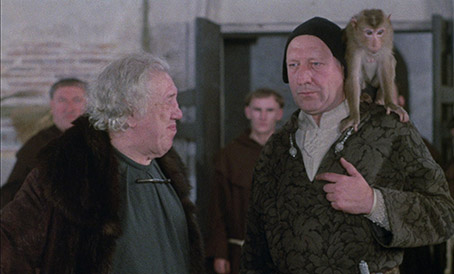
The purpose of the gathering that opens the film is to mark the arrival of the King and his entourage of inquisitive monks, who hover around corridors earwigging conversations like government agents charged with uprooting dissent. Within moments of meeting her, the King also becomes entranced by Blanche, as does his handsome page Bartolomeo, a bit of a ladies' man whose reputation precedes his unorthodox arrival. When the King sneaks out of his room that night to pay Blanche an unwelcome visit, he is challenged by Nicolas, who assumes that the covered figure whose hand he cuts with his sword is actually the randy young page. Loyal to a fault, Bartolomeo cuts his own hand in order to take the blame and protect the King's impropriety. But on the request of the Master, who is outraged that the young man should be seeking unspecified female company under his roof at night, the King sends Bartolomeo back to court with a dispatch that is set to change the course of all their fates.
All of the elements that Borowczyk was refining in Goto are honed to perfection here, and the film spins an intricate and seductive web from its captivating first scene. Characters and their intentions are outlined in a matter of seconds by Borowczyk's purposeful direction and some inspired casting in the key roles. Veteran actor Michel Simon only has to walk into the room for us to feel we know the Master, while as the perpetually upbeat Bartolomeo, Jacques Perrin exudes just the right degree of charm and confident swagger. And while Perrin, as the film's unofficial producer, was insistent that the role of Blanche be played by Catherine Deneuve, Ligia Branice captures the character's innocence and vulnerability so perfectly that when events take a darker turn for just about everyone later, it is she, as it was in Goto Isle of Love, whom we feel for the most.
The story itself is moved forward at such a brisk pace that Borowczyk is able to pepper almost every scene with intriguing and occasionally surreal detail without it playing like superficial decoration or stuttering the plot. And despite retaining the unique visual style that he road tested in Goto, he has here extended the rule book to include the occasional pan, tilt and angular shot, and even the occasional hand-held point-of-view shot. But every one of these deviations from the head-on norm is used with specific purpose, none more so than the late film tilt up from Blanche's hands to a large crucifix on the wall above her – of the content of the shot I can say no more, but it delivers the sort of emotional gut-punch that other, dare I say lesser filmmakers, would have had to pull out all of the cinematically sentimental stops to achieve. Equally striking is Borowczyk and Charles Bretoneiche's sometimes astonishing editing – the quick-cut series of close-ups in which the King's monks are revealed to also be his armed bodyguards is as economically thrilling a piece of filmmaking as I've seen all year.

In some ways, Blanche is very much a companion piece to Goto Isle of Love, sharing as it does the central conceit of a tragedy triggered by the obsession for one woman by a number of self-absorbed men (that the woman is played by the same actress in both films only serves to cement the connection). Both films are set in rigidly patriarchal societies, but in Blanche the gender imbalance is brought vividly home by the speed and the certainty with which Blanche herself is unjustly singled out as the root cause of the grief that visits the castle, when in truth she is the blameless victim of the piece. Her role as a symbol of unstained innocence is signified by Borowczyk's decision to change the name of her character from Amelia – as she was in Mazepa, the Juliusz Słowacki poem on which the film was based – to Blanche, the feminine form of the French word for white, the colour most frequently associated with purity. That she keeps a white dove in a restrictive cage as a pet is clearly designed to be read as more than just attractive set decoration.
But for all its technical confidence, richly textured sense of period and thematic depth, it's the drama that drives every scene in the film, and appropriately so. That it proves to be so riveting from the opening sequence in some ways fly in the face of standard filmmaking logic in its rejection of traditional scene coverage in favour of a more observational approach. On paper this should distance us from the characters and their respective fates, but throughout this consistently extraordinary film I found myself shifting in my seat and unconsciously vocalising my emotional responses to what unfolds. For me, this is Borowczyk the live-action feature director at the very top of his game, and I can think of no higher praise than that.
Time to quote the booklet I think. Blanche is presented in its original aspect ratio of 1.66:1 with mono 1.0 sound, and was sourced from the original 35mm interpositive and the original magnetic reels. The film was exclusively restored by Arrow Films for this release, with all work performed at Deluxe Digital-EMEA, London. The restoration work was supervised by James White on behalf of Arrow Films, carried out in close collaboration with project manager Daniel Bird and Walerian Borowczyk's long-term colleague Dominique Ségrétin. Both films were scanned in 2K resolution on a pin-registered Arriscan and were graded using the Nucoda Film Master colour grading system. Restoration work was carried out using a combination of software tools and techniques. Thousands of instances of dirt, scratches and debris were carefully removed frame by frame, damaged frames were repaired, and density and stability issues were improved.
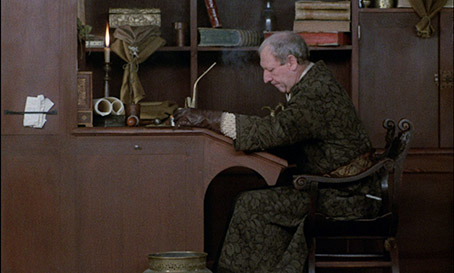
As you would hope, the result of this careful and extensive work is a transfer that sings a hymn of praise to Guy Durban's evocative colour cinematography. The subtleties of the restrained colour palette are warmly captured here, while the diffused lighting allows for a generous contrast range through the avoidance of harsh highlights and detail-swallowing shadows. The picture may not have the sort of hyper-sharpness that you'll find on home cinema system show-off discs, but the fine detail is still there, and there's a rich, filmic quality to the image that HD as a shooting format has yet to effectively reproduce. Film grain is visible throughout but is not artificially enhanced and feels natural to the image, and only a handful of the smallest dust spots remain. Once again, a first class job.
The Linear PCM mono track does not quite have the crystal precision of some of the short films on Arrow's Walerian Borowczyk Short Films and Animation disc, but the dialogue and especially the music are still clearly rendered and there are no traces of damage of background hiss.
Introduction by director Leslie Megahy (3:54)
Megahy opens his enthusiastic introduction to a film he regards as a masterpiece (no argument here) by discussing events that take place in the film's final act, so despite the title of this extra it's best not to watch it until after the main feature. He's very clear about what it is about the film that proved so revelatory for him, and despite my above warning, this does make you want to immediately watch it, even if you've just finished doing so.
Ballad of Imprisonment: Making Blanche (28:28)
A compelling, information-packed look back at the making of the film, directed by Daniel Bird and built around interviews with acclaimed filmmaker Patrice Leconte (who was second assistant director on Blanche), first assistant director André Heinrich, camera operator Noël Véry and associate producer Dominique Duvergé-Ségrétin. Leconte in particular is an enthralling raconteur, recalling how he came to work on the film, providing some engaging specifics of the shoot, and absolutely nailing the appeal of Borowczyk's artwork when he says, "Borowczyk drew in such a way that made me feel I could do the same" and describing it as "a way of drawing that didn't feel out of reach." Véry explains the deceptively simple trick employed to stage a convincing axe hit to the face and tells us that "Borowczyk was second-to-none for Méliès style tricks." That the director designed and built many of the film's more intriguing props (including the ninja monks' weapons) did not come as a big surprise, and there are some interesting stories about the actors and their relationships with each other. "Michel Simon was a pain in the arse," Véry assures us, referring specifically for the seasoned actor's habit of deliberately shocking Ligia Branice in the full knowledge that it would wind up her husband, who happened to be the director.
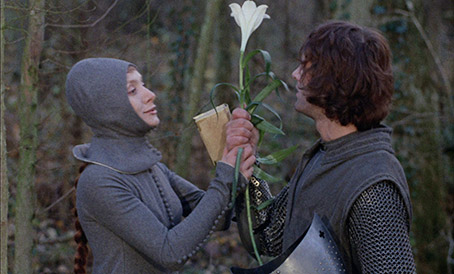
Obscure Pleasures: A Portrait of Walerian Borowczyk (63:15)
A real treat this, made up as it is of two archive interviews with Borowczyk about his work, one of them shot in the editing room during the production of Scherzo Infernal (this was also the source of interview material used in the documentary Film is Not a Sausage on the Walerian Borowczyk Short Films and Animation disc). As you would expect, there's plenty to get your teeth into here, with Borowczyk describing the Disney style of 'realistic' animation as "ersatz photography" and the studio approach to big-budget animated features as "contrary to creativity – it's manufacturing." I absolutely shared his view that it's the imperfections and irregularities that make great art, which Borowczyk encapsulates better than I ever could: "The girl who does the tracing, who draws the outline of a duck, for instance, if she once made a mistake, did something irregular, it would be interesting. But she's obliged not to. It's really awful." In the shorter second interview, Borowczyk responds to questions about his erotic films, and at one point the interviewer (who is credited as Keith Griffiths, who I'm guessing was talking through an interpreter as I didn't recognise the voice) calls him "a big pervert," to which he provides a solidly-argued response that I'm sure won't convince everyone. There are also plenty of extracts from Borowczyk's films, and this thus makes for an excellent introduction to his work.
Gunpoint (1972) (11:04)
Young pheasants are reared in captivity, let loose into local woodland, fed to keep them needy, then driven out into the open and shot by members of the French upper class, who on the evidence here look every bit as ghastly as their English counterparts. It's an observational piece, one whose class war viewpoint emerges through captions, smart editing and a soundtrack that builds to the sort of sinister intensity that suggests these shotgun-wielding buffoons are part of an alien invasion. Who knows, perhaps they are. Directed by France-based English writer and critic Peter Graham, with Borowczyk functioning as co-editor and one of four cameramen, alongside Roland Pontoiseau and Borowczyk regulars Guy Durban and Noël Véry, it's obscure enough a piece not to even have an IMDb entry, even on Borowczyk's own filmography.
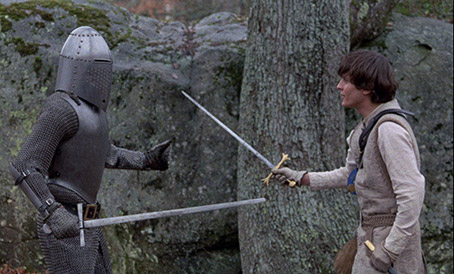
Behind Enemy Lines: Making Gunpoint (5:16)
Gunpoint director Peter Graham outlines his reason for making the film ("a kind of hatred for the hunters") and how he hoodwinked influential businessman Francis Bouygues into letting him film the shoot – when Bouygues saw the finished film he claimed that if he met Graham in the street he'd punch him in the nose. Graham also briefly touches on his impressions of Borowczyk and what attracted him to this project ("I think he quite liked the subject of these so-called clever people indulging in a very stupid sport"), and the argument he had with him about how the film should end. For the record, Borowczyk won.
Booklet
In common with its companions in Arrow's Borowczyk collection, the included booklet here is a small treasure trove of opinion and information on Borowczyk and Blanche in particular. Included is the wonderfully titled Needles in the Embroidery, a typically fascinating essay on the film by project manager and disc producer Daniel Bird; a selection of extracts from contemporary reviews, all of which are positive this time around; a concise Monthly Film Bulletin review of the film by Philip Strick from 1973; a welcome reproduction of the Latin lyrics – complete with English translation – of the opening song, which are extracted from Carmina Burana, a famous collection of bawdy texts written mostly between the 11th and 13th centuries; a Sight and Sound article from 1996 written by Chris Newby (who, never having seen a photo of Borowczyk, intriguingly imagines him as "a gnomic man, in his 70s, half-monk, half-owl, bald perhaps, with long cadaverous fingers, the curator of his own museum of erotica deep in a forest somewhere in rural France"); details of the restoration and credits for both the disc and the film.
Once again the disc also has a reversable sleeve with Borowczyk's original poster design.
In case I haven't made myself perfectly clear, I loved every frame of this emotionally punishing but beautifully realised film, and reading through what I've written I realise that I've only skimmed the surface about what makes it so uniquely affecting. I could fill another five pages with experience-spoiling detail, but I have a deadline that I've already overshot by two days and two more discs from this set yet to cover. My favourite Borowczyk feature, impressively restored and once again accompanied by some terrific extra features. I may be starting to sound like a bit of a stuck record when it comes to Arrow Academy's Borowczyk releases, but this release once again gets our highest recommendation.
|